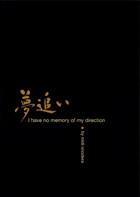
I Have No Memory Of My Direction 2005
Distributed by Canadian Filmmakers Distribution Centre, 401 Richmond St. W. Suite 119, Toronto, Ontario, Canada M5V 3A8; 416-588-0725
Produced by Midi Onodera
Directed by Midi Onodera
DVD, color, 77 min.
Sr. High - Adult
Art, Asian American Studies, Asian Studies, Film Studies, Media Studies, Photography, Women's Studies
Date Entered: 03/07/2008
Reviewed by John J. Meier, Physical and Mathmatical Sciences Library, Pennsylvania State University, University Park, PAOne of Onodera's longest films, I Have No Memory Of My Direction is a highly personal, fictional travelogue that contains musings on dreams, memory, and representation. The narrator tells a disjointed story in the third person of a woman seeking to capture the essence of her Japanese heritage. The film is a primarily digital video of modern Japan, from daily life to pop culture to traditional cultural events, combined with television and film footage distorted with toy cameras and editing. The journey begins by visiting landmarks of Tokyo which leads to a focus on one modern Japanese legend moving into commentary on war and finally ending back with thoughts of her father. Along the way many short musings on film making and cameras, terrorism, nuclear war, and traditional Japanese stories also occur. Some of the observations, such as on the American war in Iraq, are very dated in the context of production year of the film. Overall this film could be seen as two to three shorter films with bridging themes, which makes it powerful in some parts but very long and uneven as a whole.
The high number and variety of visual techniques used in the film reflects Onodera's experience with the medium, and the use of each is obviously deliberate. The quality of digital video, the most frequently used format, is not of high quality though shots are well composed and steady. The use of toy cameras and other distorting techniques is most often used on historical and stock footage, but is not always naturally interspersed within the film. The sound is primarily clear narration, but sometimes lower quality diegetic music and voice are included. The editing and use of digital distortion cause alienation and dissonance in the audience almost as frequently as they powerfully engage. The accompanying study guide provides more context and meaning for the film since it focuses on certain portions of the long narrative. The preview copy did not include an interview with the director or photographs.
This video is most appropriate to the college and university level. Collections that support film, photography, and media studies would benefit the most from this program. This film should be supplemental to collections on Japanese or Asian studies, since the narration is often personal or fictional it is less informative to those beginning to study in the subject. Collections for women's studies or multicultural programs would benefit from including such a strong auteur work by a female, Asian-Canadian filmmaker. Finally the meditations on perception, dreams, and representation may benefit collections addressing these topics.
Awards
- Honorable Mention Award, Ann Arbor Film Festival 2006